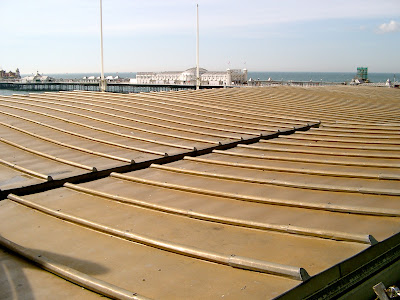In many countries the 23rd April is still celebrated as a Feast Day to mark the birth day in 303AD of St. George. It is also the date of Shakespeare's death, and, in Brighton on the nearest Sunday, the 25th., the written word and the national flower will be celebrated in Jubilee Square with a writing and poetry event, "The Book & the Rose". In a square decked out in the red & white of St. George, the Festival Shakespeare Company will be paying a special tribute to the bard. There will be entertainment from Hanover Poetry Festival, Hammer & Tongue, Short Fuse and the Catalyst Club and folk music from well- known Sussex performers. There will also be children's activities, deckchairs and local stalls selling flowers, including red roses, and books.

In England the use of the red upright cross of St.George originates from the 12th century crusades and in 1220 the Synod of Oxford declared St.George's Day a national feast day in England. The red cross was used as a national flag & military badge during Edward III's campaigns in France from the 1340's onwards. In 1388 the crosses of St.George & St Andrew faced each other for the first time across the battlefield of Otterburn.
During the 15th century the celebrations for St.George's Day rivalled that of Christmas and the symbol of the English rose
became popular. It was one of the few Saint's Days that survived the Reformation in the 16th.century, but, after the Union with Scotland in the 18th. its popularity began to wane.
The English have no celebratory occasions exclusively their own and the growing independence of Scotland and Wales has given impetus to the idea that St. George's Day should be given a higher profile. Petitions have been presented to No.10 calling for a St.George's Day Bank Holiday and questions have been put in Parliament. So far these have been side-stepped but many supporters will be taking a day's holiday on the 23rd. to help publicise the call.
















